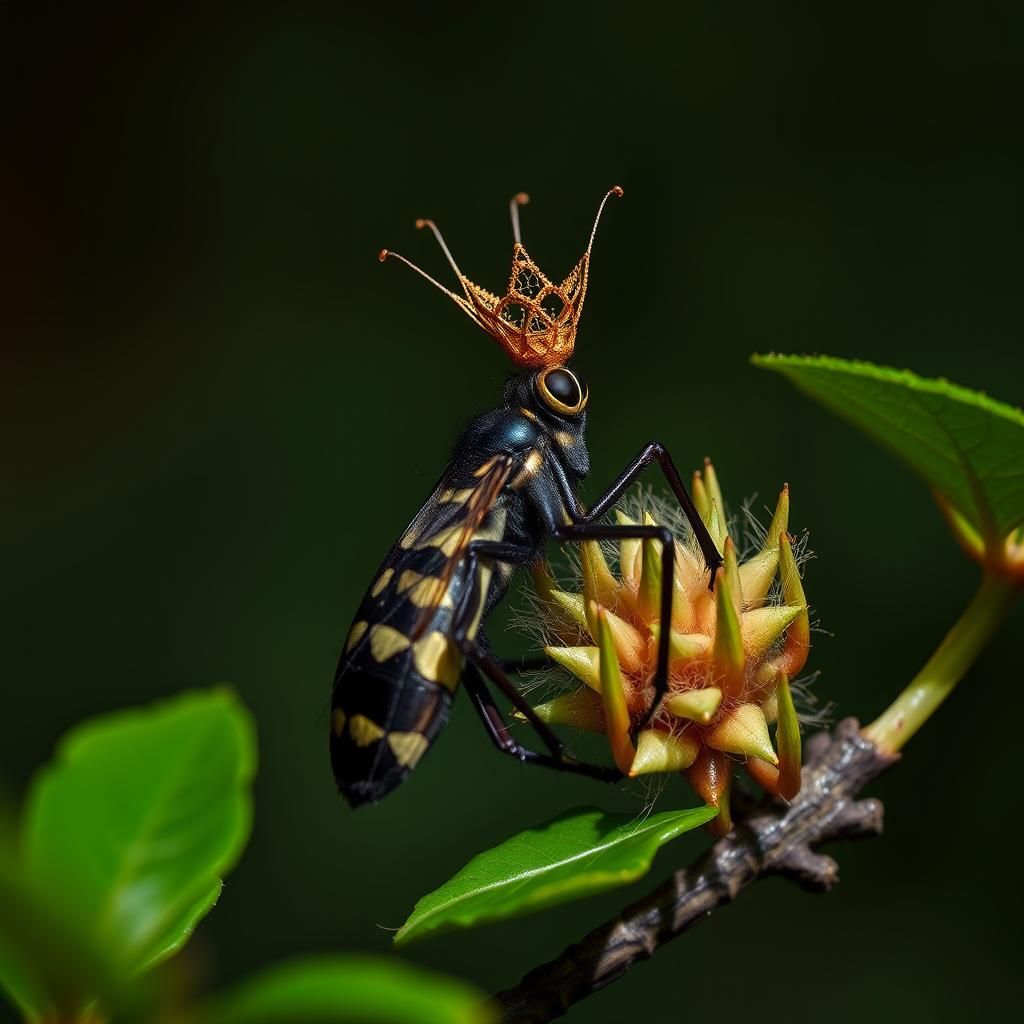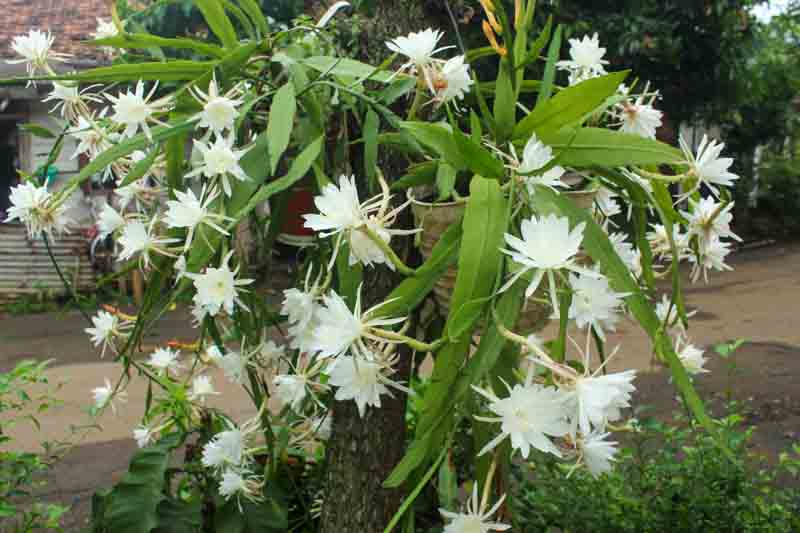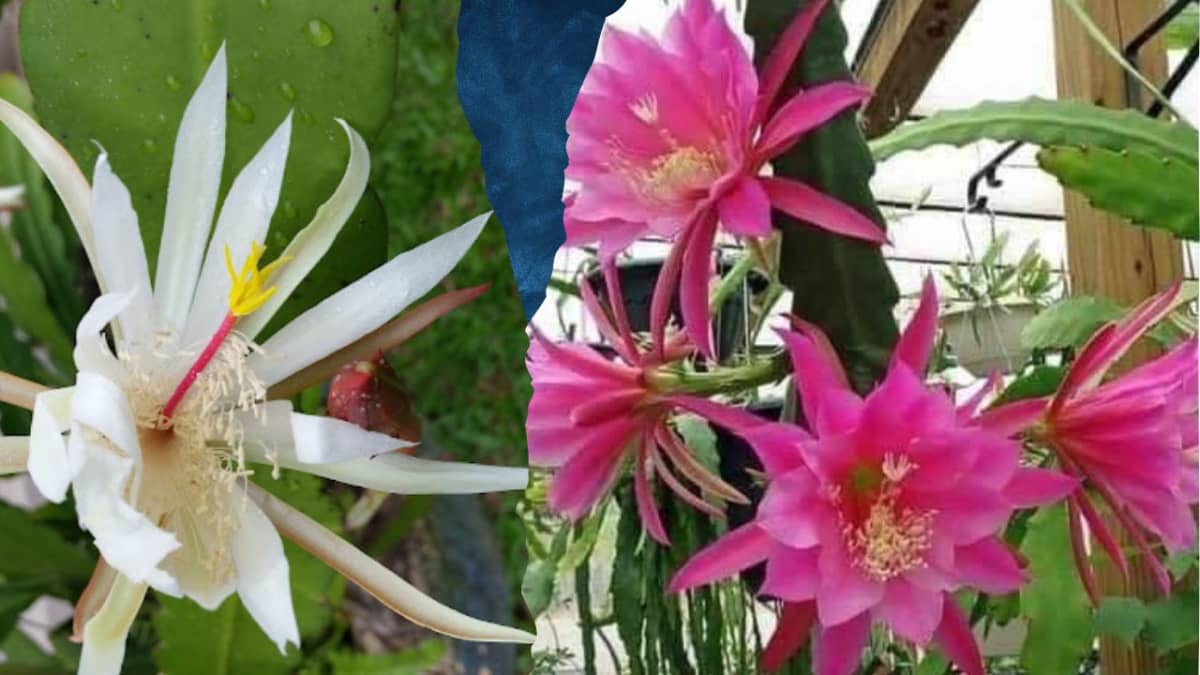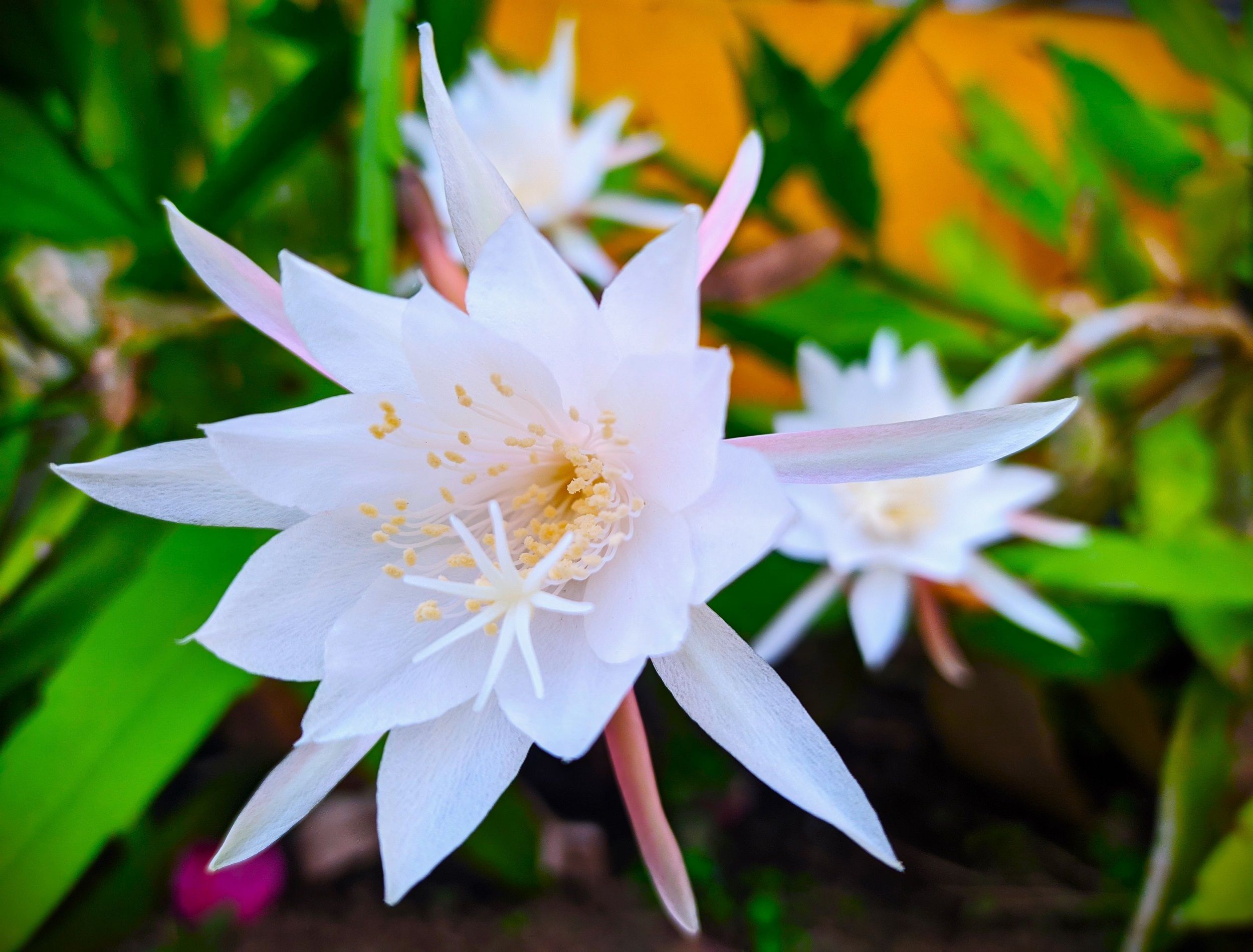Is Queen of the Night Invasive? Understanding the Impact on Local Ecosystems

The Queen of the Night, known for its stunning nocturnal blooms, has become a topic of interest among ecologists and botanists alike. As this exotic plant spreads beyond its native range, concerns about its potential invasiveness emerge. Understanding the impact of the Queen of the Night on local ecosystems is crucial for conservation efforts and biodiversity preservation. This article delves into the characteristics that may contribute to its invasive behavior, examines its effects on indigenous flora and fauna, and discusses management strategies to mitigate any negative consequences. Join us as we explore the delicate balance between beauty and ecological sustainability.
Is Queen of the Night Invasive?
The Queen of the Night (Selenicereus grandiflorus) is not classified as an invasive species in most regions where it is grown. This stunning cactus is native to tropical areas, particularly in Central and South America, and is prized for its large, fragrant flowers that bloom overnight. While it can spread through its tendrils and produce new plants, it typically does not outcompete local flora or disrupt ecosystems in the areas where it is cultivated. In controlled settings, such as gardens and homes, it can be managed to prevent any potential overgrowth. However, as with any plant capable of propagation, it's essential to monitor its growth to ensure it does not become overly aggressive in non-native areas.
Origin and Habitat
The Queen of the Night is indigenous to tropical regions, thriving in environments that offer warm temperatures and moderate humidity. Its natural habitat includes areas of Mexico, the Caribbean, and parts of South America. In these regions, the plant can be found growing in rocky soils or amongst other shrubs, utilizing both its climbing ability and photosynthetic prowess. Understanding its origin helps to clarify why it may not be deemed invasive in certain climates, as it has co-evolved with native species, maintaining a balance within those ecosystems.
Growth Characteristics
This plant is known for its remarkable growth habits, often climbing on nearby structures or vegetation. The Queen of the Night can reach impressive heights and spread through aerial roots, making it a visually striking addition to gardens. It typically produces long, flat stems that can develop a lush green appearance. The plant's growth can sometimes be rapid, and while it has the potential to become unruly, with proper care and management, it can be kept in check and grown as an attractive ornamental specimen.
Impact on Local Ecosystems
When grown in non-native areas, the impact of Queen of the Night on local ecosystems is minimal. It does not typically dominate or displace native species, as its specific growth conditions limit its adaptability. While it may reproduce through seed dispersal or vegetative propagation, it generally coexists without significant adverse effects on the environmental balance. Local fauna may occasionally benefit from its presence, particularly pollinators attracted to its nocturnal blooms, which can enhance biodiversity in artificial landscapes.
Prevention and Management
Preventing the uncontrolled spread of Queen of the Night in non-native areas involves regular monitoring and appropriate gardening practices. Gardeners are encouraged to prune and manage the plant's growth, especially if it starts to encroach upon native species. It is also essential to avoid planting it in areas where it could take over wildlife habitats or compete with local flora. By utilizing containers for growth or establishing physical barriers, individuals can effectively manage this plant to minimize any risk of invasiveness.
Cultivation Considerations
When cultivating Queen of the Night, it is crucial to consider its environmental needs and growth potential. It thrives in well-draining soil and requires a sunny location for optimal growth and flowering. Additionally, gardeners should provide adequate support for its climbing habits and ensure correct watering practices to prevent over-hydration. By understanding these requirements, growers can enjoy the beauty of this unique plant while mitigating any potential risks related to its spread and cultivation.
| Category | Details |
|---|---|
| Native Habitat | Central and South America, Caribbean |
| Growth Type | Climbing cactus, rapid growth |
| Flowering Time | Nocturnal blooms |
| Management | Pruning, container growth |
| Environmental Impact | Minimal in non-native regions |
Is Queen of the Night flower invasive?

The Queen of the Night flower, known scientifically as Selenicereus grandiflorus, is a species of cactus characterized by its large, fragrant flowers that bloom at night. Regarding its invasive nature, the Queen of the Night flower is not typically classified as an invasive species. However, understanding its growth and propagation habits can provide insight into its ecological behavior.
Characteristics of Queen of the Night Flower
The Queen of the Night flower is a nocturnal blooming cactus renowned for its magnificent white flowers that open in the evening. Here are some characteristics that define this plant:
- Nocturnal Blooming: The flowers generally bloom only for one night, closing by dawn.
- Fragrance: The scent is strong and sweet, attracting nocturnal pollinators like moths.
- Growth Habit: It grows as a vine, attaching itself to nearby structures for support.
Native Habitat
The native habitat of the Queen of the Night flower primarily includes the tropical and subtropical regions of Central and South America. Below are details regarding its native environment:
- Climate: Prefers warm, humid conditions typical of tropical regions.
- Soil Type: Thrives in well-drained soils, often found in rocky terrains.
- Natural Pollinators: Moths and other nocturnal insects play a crucial role in pollination.
Growth and Propagation
The growth pattern of the Queen of the Night flower involves specific propagation methods, which are essential to understand its environmental impact:
- Seed Dispersal: The plant can reproduce through seeds, facilitated by pollinators.
- Cuttings: It can also be propagated vegetatively through stem cuttings.
- Growth Rate: It grows rapidly under optimal conditions, which can lead to dense growths if uninhibited.
Potential Invasive Traits
While not classified as an invasive species, certain traits can be concerning in specific contexts:
See also:
- Rapid Growth: The plant can quickly cover surfaces, potentially outcompeting local flora.
- Adaptability: It can adapt to various conditions, which might allow it to thrive outside its native habitat.
- Reproduction: High rates of reproduction may contribute to localized dominance in some areas.
Management and Control
If the Queen of the Night flower begins to cause concerns in certain areas, management strategies may be necessary. These strategies include:
- Regular Pruning: Keeping growth in check through regular trimming can help manage its spread.
- Monitoring: Observing the plant's behavior in non-native regions can aid in understanding its impact.
- Public Awareness: Educating the community about its growth habits can prevent unintentional spread.
What is the benefit of a queen of night flower?

The Queen of Night flower, scientifically known as Selenicereus grandiflorus, offers a variety of benefits that range from aesthetic appeal to health advantages. Its unique characteristics and nocturnal blooming pattern have made it a subject of intrigue and admiration.
1. Aesthetic Appeal
The Queen of Night is renowned for its stunning beauty, blooming only at night and emitting a captivating fragrance. This unique floral display attracts both gardeners and botanists alike.
- Night Blooming: The rare occurrence of its flowers blooming only at night creates a sense of wonder and anticipation.
- Intensely Fragrant: The sweet scent of the flowers contributes to a delightful nighttime atmosphere in gardens and landscapes.
- Visual Interest: With large white blooms up to a foot wide, the flower adds striking visual interest to any garden space.
2. Air Purification
The Queen of Night flower is not only visually appealing but also serves as a natural air purifier. It plays a role in enhancing air quality by absorbing pollutants.
- Oxygen Production: Like other plants, it contributes to oxygen production during the night, benefiting indoor air quality.
- Absorption of Toxins: The plant can absorb common indoor toxins, improving the overall health of the living environment.
- Humidity Regulation: By releasing moisture through transpiration, the plant helps maintain humidity levels in its surroundings.
3. Cultural Significance
In various cultures, the Queen of Night holds significant symbolic meaning. Its beauty and rarity make it a representation of various themes.
- Symbol of Love: Because of its rare blooming time, it is often associated with love and romance.
- Cultural Celebrations: In some cultures, it is linked to festivals and ceremonies, celebrated for its beauty and fragrance.
- Folklore and Mythology: The flower features in many stories, often symbolizing transformation and the fleeting nature of beauty.
4. Medicinal Uses
The Queen of Night flower has been utilized in traditional medicine in various cultures, showcasing its potential healing properties.
- Anti-Inflammatory Properties: Various parts of the plant are believed to possess anti-inflammatory effects.
- Stress Relief: The fragrance is often used in aromatherapy for its calming effects, helping to reduce anxiety.
- Digestive Aid: Some traditional remedies include the use of the plant for digestive issues, although more research is needed.
5. Environmental Benefits
This unique plant plays a role in its ecosystem, supporting biodiversity and contributing to environmental health.
- Pollinator Attraction: The flowers attract nocturnal pollinators like moths and bats, crucial for ecosystem balance.
- Soil Improvement: As a vigorous grower, it helps in soil stabilization and improvement in nutrient-rich environments.
- Cacti and Succulent Ecosystems: Contributes to the diversity of cactus and succulent gardens, providing habitat for various species.
Does Queen of the Night flower repel mosquitoes?

The Queen of the Night flower, scientifically known as Selenicereus grandiflorus, is a stunning cactus species that produces beautiful, large white flowers that bloom at night. However, when it comes to the question of whether it repels mosquitoes, the answer is not straightforward. While some plants are known for their insect-repellent properties, there is limited research on the Queen of the Night flower specifically regarding its effects on mosquitoes.
Understanding the Queen of the Night Flower
The Queen of the Night flower is primarily known for its aesthetic value rather than pest control.
- Appearance: The flower is large and tubular with a fragrant aroma that attracts pollinators like moths.
- Habitat: This cactus typically thrives in tropical environments, where it can bloom under certain conditions.
- Cultural significance: In many cultures, the flower is celebrated for its beauty and is often given as a gift.
Plants That Repel Mosquitoes
While the Queen of the Night flower is not specifically known to repel mosquitoes, there are several plants recognized for their mosquito-repelling properties.
- Lemon Balm: Known for its strong lemon scent, lemon balm can deter mosquitoes effectively.
- Basil: This herb emits aromatic oils that mosquitoes find unpleasant, making it an excellent choice for gardens.
- Marigolds: The strong scent of marigolds can repel mosquitoes and other garden pests.
The Role of Fragrance in Insect Repellence
The fragrance of plants plays a crucial role in attracting or repelling insects, including mosquitoes.
See also:
- Attractants: Sweet-smelling flowers often attract insects for pollination.
- Repellents: Strong aromatic herbs can produce scents that deter unwanted pests.
- Specific Compounds: Certain essential oils are known for their mosquito-repelling capabilities, such as citronella and eucalyptus.
Environmental Factors Affecting Mosquito Behavior
Environmental conditions can significantly influence mosquito behavior, independent of the presence of specific plants.
- Humidity: Mosquitoes thrive in wet, humid conditions, making their populations increase in such environments.
- Breeding Sites: Stagnant water is a prime breeding ground for mosquitoes, so eliminating standing water can reduce their numbers.
- Time of Day: Many mosquitoes are most active during dusk and dawn, making it essential to take precautions during these times.
Alternatives for Mosquito Control
Considering the intricate factors involved in mosquito control, some alternative methods can be implemented to manage these pests effectively.
- Insect Repellents: Using DEET or natural repellents like citronella can help keep mosquitoes at bay.
- Physical Barriers: Installing screens on windows and doors can prevent mosquitoes from entering living spaces.
- Natural Predators: Encouraging bats and birds, which feed on mosquitoes, can be an effective control measure.
Is Queen of the Night a hanging plant?

Queen of the Night, scientifically known as Selenicereus grandiflorus, is primarily recognized as a cactus species. It is not typically characterized as a hanging plant, although it can exhibit some trailing qualities under certain growing conditions.
Characteristics of Queen of the Night
Queen of the Night has specific features that define it as a cactus:
- Growth Pattern: The plant tends to grow upright, producing long, serpentine stems that may reach lengths of several feet.
- Flowers: It is famous for its large, white, fragrant flowers that bloom only at night.
- Environment: The plant thrives in warm, well-draining conditions typical of many cactus species.
Propagation Methods
Propagation of Queen of the Night can be done through various methods, each suitable for different conditions:
- Cuttings: Snipping off a segment of the stem allows the cutting to root and grow into a new plant.
- Seeds: The seeds can be planted, but it requires more patience and proper conditions for germination.
- Offsets: The plant can produce offsets, or pups, which can be separated from the parent plant.
Cultural Requirements
To ensure healthy growth, Queen of the Night requires specific cultural conditions:
- Light: Prefers bright, indirect sunlight, which helps in fostering the plant's lush, green coloration.
- Water: Like most cacti, it needs infrequent watering—allowing the soil to dry out between waterings is crucial.
- Soil: A well-draining potting mix designed for cacti is ideal to prevent root rot.
Container Choices
When considering containers for Queen of the Night, several factors come into play:
- Drainage: Containers with drainage holes are critical to allow excess water to escape.
- Size: A pot that is too large can hold excess moisture, while a snugger fit promotes healthier growth.
- Material: Clay pots are preferred as they breathe better, but plastic pots can also work if drainage is managed.
Potential Challenges
Growing Queen of the Night can present several challenges that gardeners should be aware of:
- Pests: Watch for common pests, such as spider mites and mealybugs, which can affect the plant's health.
- Overwatering: Being cautious with irrigation is vital, as cacti are particularly susceptible to root rot.
- Temperature: Extreme cold can be detrimental; maintaining a warm, stable environment is essential.
Questions from Our Readers
Is Queen of the Night invasive in gardens?
Yes, the Queen of the Night (also known as Selenicereus grandiflorus) can become invasive in certain garden settings, especially if not properly maintained. Its ability to spread rapidly and thrive in various conditions can lead to it outcompeting local plants.
How can I manage Queen of the Night if it becomes invasive?
To manage an invasive Queen of the Night, regularly prune the plant to control its growth and prevent it from overwhelming other species. Additionally, consider growing it in containers to limit its spread and monitor its growth closely.
What are the signs that Queen of the Night is becoming invasive?
Signs that the Queen of the Night is becoming invasive include excessive spreading beyond its intended area, crowding out other plants, and producing a high number of offspring or new growths. If these signs are observed, immediate action may be required.
Is Queen of the Night harmful to local ecosystems?
While the Queen of the Night may not be directly harmful, its invasive nature can disrupt local ecosystems by outcompeting native plants for resources, leading to a decrease in biodiversity and altering habitats. It is essential to monitor its impact on the surrounding environment.
See also:

If you want to read more articles like Is Queen of the Night Invasive? Understanding the Impact on Local Ecosystems, we recommend you check out our Weeds category.
Leave a Reply
Related Articles